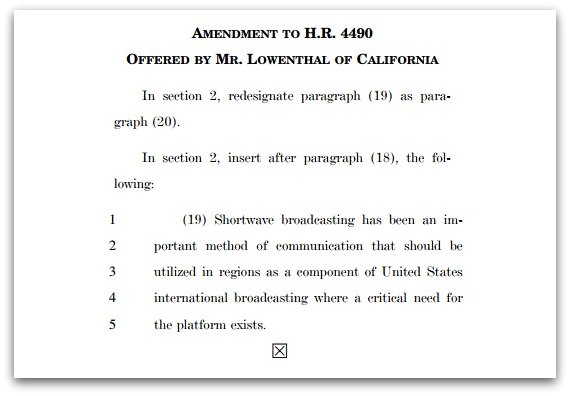(Source: BBG Press Release via Dan Robinson)
FY 2018 budget request reflects key BBG priorities amid spending constraints
WASHINGTON, D.C. — The Broadcasting Board of Governors today released the FY 2018 budget request to support key U.S. foreign policy goals by providing news and information around the world while accommodating the current tight fiscal climate.
“As is true throughout the federal government, the budgetary environment requires that we prioritize our resources while emphasizing impact and maintaining the level of excellence our audiences have come to expect,” said CEO John F. Lansing. “Despite reductions in spending, we are committed to our mission, impacting the lives of hundreds of millions of people around the world by providing accurate, unbiased, and uncensored news and information.”
The tight fiscal environment necessitates BBG to improve operational efficiencies and make difficult resource trade-offs to effectively meet performance goals and support U.S. foreign policy priorities.
The $685.1 million budget request includes transmission, program and staffing reductions across all BBG networks—the Voice of America, Radio Free Europe/Radio Liberty, the Office of Cuba Broadcasting, Radio Free Asia, and the Middle East Broadcasting Networks—and the International Broadcasting Bureau, including the Office of Technology, Services and Innovation. This includes reducing, and in some cases, eliminating certain language service capacities; shifting away from shortwave transmissions where they have the least impact; and optimizing information technology.
Although the funding request represents a 12.9 percent reduction from the FY 2017 enacted budget, it prioritizes funding for U.S. foreign policy goals, including combatting violent extremism, countering Russian disinformation, and enhancing programming for North Korean audiences. It also capitalizes on the momentum gained from the streamlining of operations in 2016 and the aggressive shift to digital already underway at each of the five networks.
The request includes $680.4 million for International Broadcasting Operations, including Federal and non-Federal networks, as well as $4.7 million for Broadcasting Capital Improvements.
The FY 2018 budget request contains proposals to continue the agency’s responsive shift to the most effective media platforms, respond readily to crises, keep pace with shifts in audience demographics and interests, and sharpen strategy and results measurement to drive performance.
BBG’s extensive network of seasoned, professional and well-connected journalists is particularly strong in regions where ISIS, Russia, Iran, China and other global actors that do not share American values are attempting to make further inroads.
“Should Congress enact this budget, there is no doubt that staff reductions would be difficult,” Lansing said. “We will do everything possible to minimize the effect on our employees by emphasizing attrition, early retirement opportunities, and agency buyouts for federal employees wherever possible. Our staff and journalists are the core of what drives our impact around the world. We will do everything we can to safeguard our greatest asset.”





